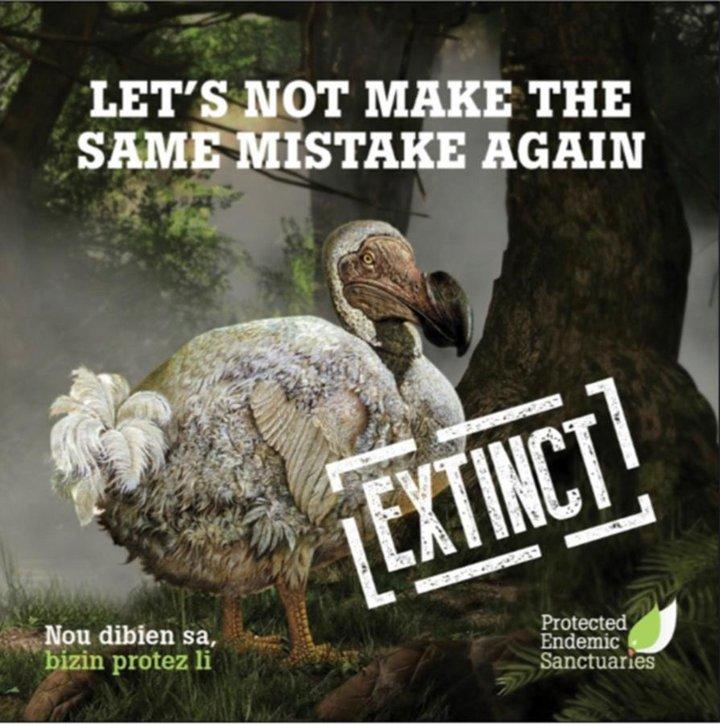Crop wild relatives – are they going to end up like the dodo?

Many crop wild relatives are at risk of extinction. How to safeguard and use them was the theme of a side event held during the Plant Treaty Governing Body. Bioversity scientists and event organizers Dulloo and Thormann report.
Many crop wild relatives are at risk of extinction. How to safeguard and use these precious resources was the theme of a side event held during the Plant Treaty Governing Body. Bioversity International scientists and event organizers Ehsan Dulloo and Imke Thormann report on the discussion.
What do the relatives of our cultivated crops and a flightless bird have in common? Well, they may share a dramatic fate – extinction.
A dodo picture with the words ‘Let’s not make the same mistake again’ was the last slide of one of the speakers at a recent event organized by Bioversity International and the Secretariat of the Convention on Biological Diversity to raise awareness on the importance to safeguard and use crop wild relatives.
The story of the dodo is very well known. Less known is what crop wild relatives are and why they are of key importance to our food security. We just cannot risk to lose them.
Crop wild relatives are wild plant species related to a particular crop. Untended by humans, they continue to evolve in the wild, developing traits that farmers and breeders can cross with domesticated crops to develop more resilient, nutritious and productive varieties. It has been estimated that the contribution of crop wild relatives to improving food production has an annual value of US$ 115-120 billion worldwide.
As many other wild plants, crop wild relatives are vulnerable to changes in land use due to growing cities and climate change. Many are at risk of extinction. Their vulnerable position is compounded by the fact that they fall between the agricultural and conservation agendas.
During last week’s event, held in the context of the 6th Meeting of the Plant Treaty Governing Body, we discussed with scientists and policymakers how to strengthen the in situ conservation (i.e. the conservation in the natural habitat) and sustainable use of crop wild relatives.
In a thought-provocative presentation, Nigel Maxted, co-chair of IUCN/SSC Crop Wild Relatives Specialist Group, highlighted the complementarity between ex situ conservation (conservation in seedbanks and genebanks) and in situ conservation. Both are necessary to safeguard these precious wild plants. He also underlined how in situ conservation is more challenging because it requires large collaborations of different stakeholders – the environment community and the agricultural biodiversity community. "We need to bridge this gap and implement systematic in situ conservation initiatives. In order to do so, countries need to invest in this approach, which now accounts for less than 5% of total investment in plant genetic resources conservation," concluded Maxted.
Some countries are already taking steps to safeguard crop wild relatives and enhance their use. We presented one such example from Zambia, Mauritius and South Africa, who are participating in an initiative coordinated by Bioversity International. Through a project* co-funded by the European Union and implemented through the ACP-EU Co-operation Programme in Science and Technology, we have worked with partners to train over 50 scientists within the Southern African Development Community region on in situ conservation, predictive characterization and pre-breeding.
As a result, Zambia, Mauritius and South Africa have prepared comprehensive checklists of crop wild relatives from their countries and are prioritizing some crop wild relatives for in-depth diversity analysis, with a view to identify priority hotspot areas where to apply in situ conservation measures. The three countries will also develop National Strategic Action Plans which will be mainstreamed into National Biodiversity Action Plans and other policy instruments.
Yacoob Mungroo, Senior Scientific Officer at Ministry of Agro Industry and Food Security, Mauritius and Godfrey Mwila, acting Deputy Director of Zambian Agriculture Research Institute, also presented, sharing their experiences in implementing the project in their countries.
The work we are carrying out with partners in the Southern African Development Community region is a good example of how countries can take the lead in bridging the gap between the agriculture and environment sectors to effectively safeguard crop wild relatives. The methods and approaches used in this initiative can be replicated in other regions of the world to achieve a global impact.
In a recent notification**, countries were encouraged to “review, develop or strengthen their national strategies for the in situ conservation of crop wild relatives through protected area networks and other area-based conservation measures and the development of integrated approaches that link their conservation to their sustainable use. Such actions have the potential to make significant contribution to the synergistic achievement of Aichi Biodiversity Targets 7, 11, 12 and 13, as well as to Global Strategy for Plant Conservation Targets 5, 6, 7 and 9.”
Let’s join forces – we need to safeguard crop wild relatives, and we need to do it now.
By Ehsan Dulloo and Imke Thormann
_____________________________
* ‘In situ conservation and use of crop wild relatives in three ACP countries of the SADC region’ (short name - SADC Crop Wild Relatives) is a three-year project (2014-2016) co-funded by the European Union and implemented through the ACP-EU Co-operation Programme in Science and Technology (S&T II) by the African, Caribbean and Pacific (ACP) Group of States. Grant agreement no. FED/2013/330-210.
** The notification was jointly issued by the Secretariats of the Convention of Biological Diversity, the International Treaty on Plant Genetic Resources for Food and Agriculture, the Commission on Genetic Resources for Food and Agriculture, and Bioversity International.
